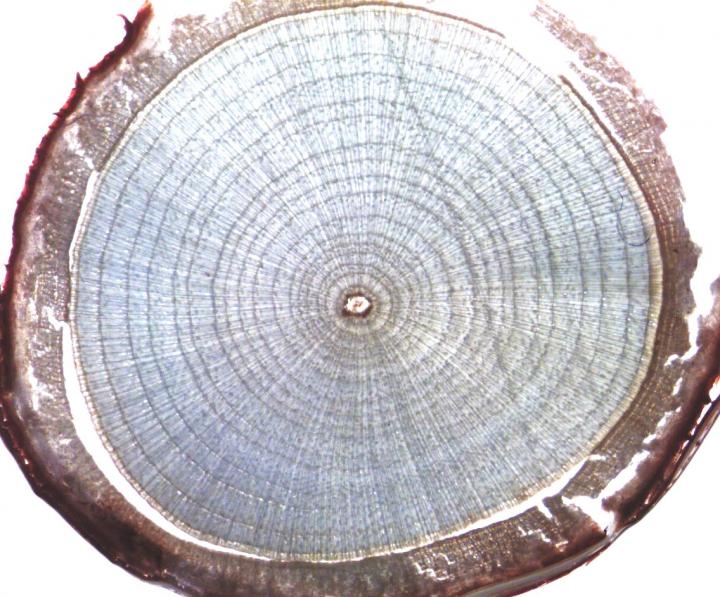Tundra study uncovers impact of climate warming in the Arctic

Scientists are using ring growth data, like these shown in a willow shrub, to assess the age and growth of shrubs in a huge study of the Arctic tundra. Credit: Isla Myers-Smith
One of the biggest studies to date of key vegetation in the Arctic tundra provides strong evidence that dramatic changes in the region are being driven by climate warming.
Studies of tundra shrubs – which act as a barometer of the Arctic environment – show that they grow more when temperatures are warmer. Increased shrub growth, driven by recent and future warming in the Arctic, could cause more warming in tundra ecosystems and for the planet as a whole.
Taller shrubs prevent snow from reflecting heat from the sun back into space, warming the Earth's surface. They can also influence soil temperatures and thaw permafrost. Increased shrubs can change the cycling of nutrients and carbon in soil, affecting its decomposition and the amount of carbon released to the atmosphere. All these factors can contribute to climate warming both in the Arctic and on a global scale.
Shrub species in wet landscapes at mid-latitudes of the Arctic are the most sensitive to climate warming, the study found. These areas are vulnerable to change as they store large amounts of carbon in frozen soil, which could be released by warming and permafrost thaw.
An international team of scientists at 37 sites in nine countries, led by the University of Edinburgh, studied records of shrub growth spanning 60 years by analysing annual growth rings in the plant stems, to explore links between climate and vegetation change.
The study, published in Nature Climate Change, was funded by the International Arctic Science Committee. The findings will help improve models of future changes to tundra ecosystems and the impacts of these changes on the global climate.
Dr Isla Myers-Smith, of the University of Edinburgh's School of GeoSciences, who co-ordinated the study, said: “Arctic shrub growth in the tundra is one of the most significant examples on Earth of the effect that climate change is having on ecosystems. Our findings show there is a lot of variation across this landscape. Understanding this should help improve predictions of climate change impacts across the tundra.”
Media Contact
All latest news from the category: Earth Sciences
Earth Sciences (also referred to as Geosciences), which deals with basic issues surrounding our planet, plays a vital role in the area of energy and raw materials supply.
Earth Sciences comprises subjects such as geology, geography, geological informatics, paleontology, mineralogy, petrography, crystallography, geophysics, geodesy, glaciology, cartography, photogrammetry, meteorology and seismology, early-warning systems, earthquake research and polar research.
Newest articles

Sea slugs inspire highly stretchable biomedical sensor
USC Viterbi School of Engineering researcher Hangbo Zhao presents findings on highly stretchable and customizable microneedles for application in fields including neuroscience, tissue engineering, and wearable bioelectronics. The revolution in…

Twisting and binding matter waves with photons in a cavity
Precisely measuring the energy states of individual atoms has been a historical challenge for physicists due to atomic recoil. When an atom interacts with a photon, the atom “recoils” in…

Nanotubes, nanoparticles, and antibodies detect tiny amounts of fentanyl
New sensor is six orders of magnitude more sensitive than the next best thing. A research team at Pitt led by Alexander Star, a chemistry professor in the Kenneth P. Dietrich…





















